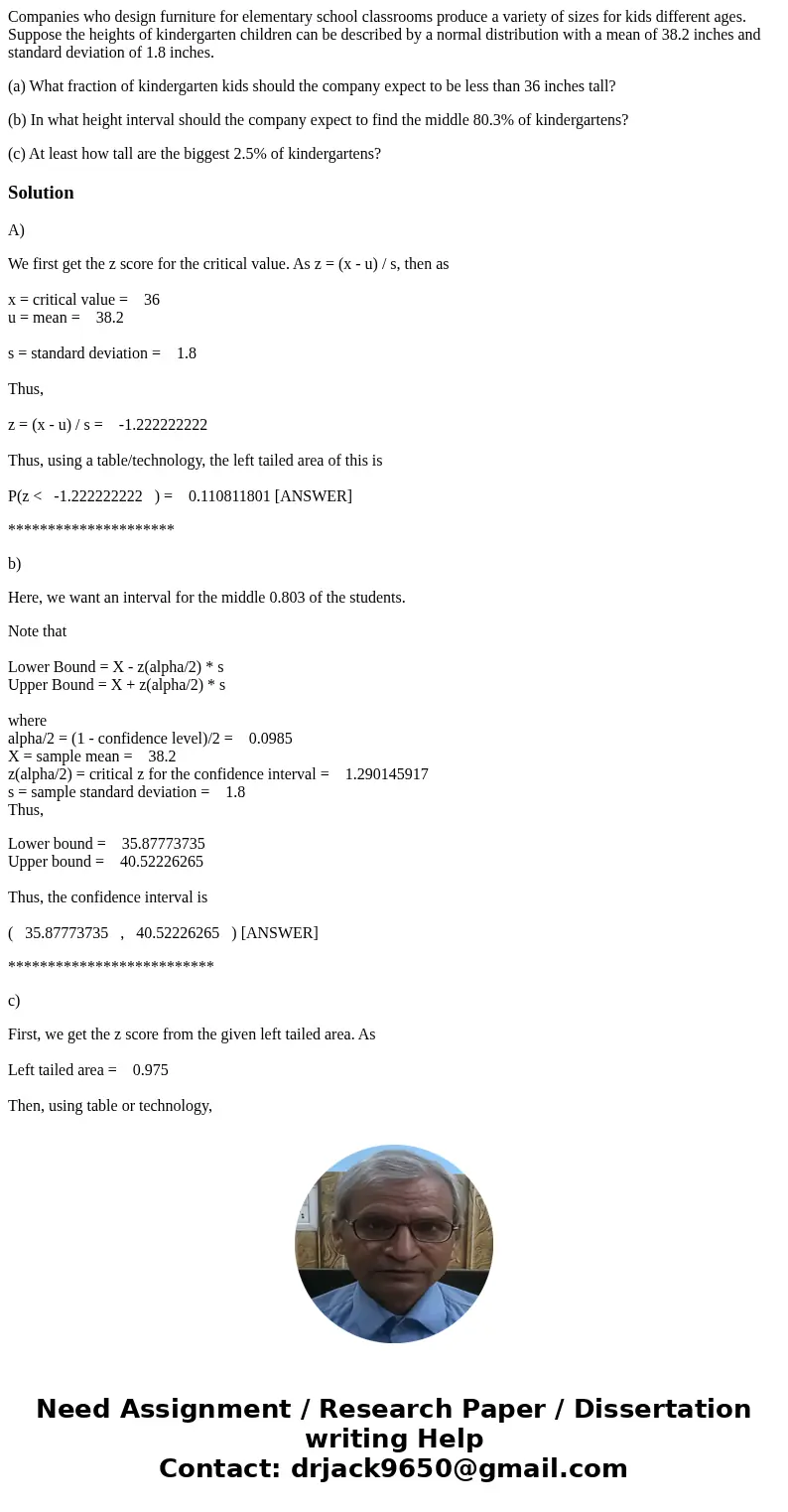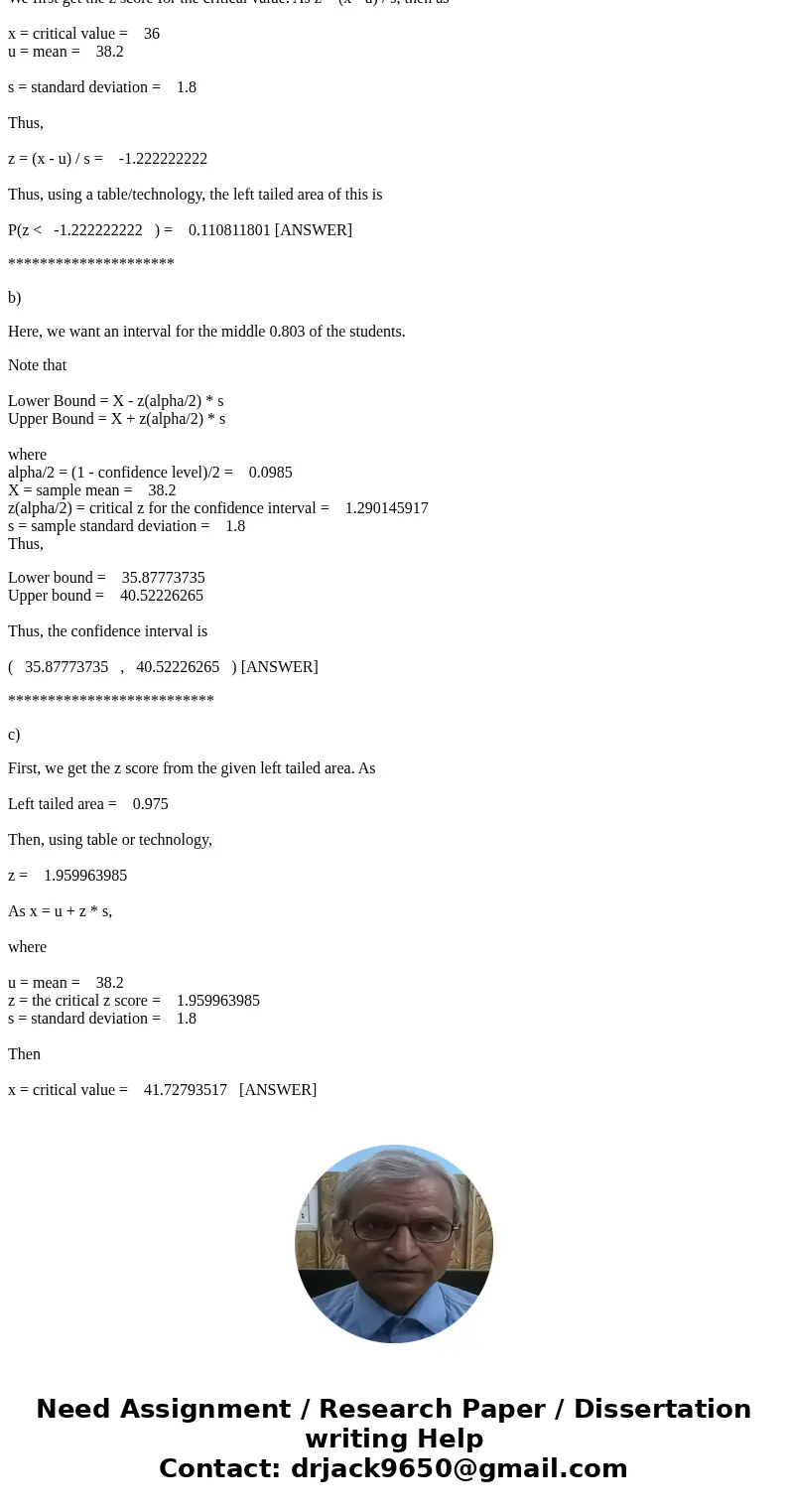Companies who design furniture for elementary school classro
Companies who design furniture for elementary school classrooms produce a variety of sizes for kids different ages. Suppose the heights of kindergarten children can be described by a normal distribution with a mean of 38.2 inches and standard deviation of 1.8 inches.
(a) What fraction of kindergarten kids should the company expect to be less than 36 inches tall?
(b) In what height interval should the company expect to find the middle 80.3% of kindergartens?
(c) At least how tall are the biggest 2.5% of kindergartens?
Solution
A)
We first get the z score for the critical value. As z = (x - u) / s, then as
x = critical value = 36
u = mean = 38.2
s = standard deviation = 1.8
Thus,
z = (x - u) / s = -1.222222222
Thus, using a table/technology, the left tailed area of this is
P(z < -1.222222222 ) = 0.110811801 [ANSWER]
*********************
b)
Here, we want an interval for the middle 0.803 of the students.
Note that
Lower Bound = X - z(alpha/2) * s
Upper Bound = X + z(alpha/2) * s
where
alpha/2 = (1 - confidence level)/2 = 0.0985
X = sample mean = 38.2
z(alpha/2) = critical z for the confidence interval = 1.290145917
s = sample standard deviation = 1.8
Thus,
Lower bound = 35.87773735
Upper bound = 40.52226265
Thus, the confidence interval is
( 35.87773735 , 40.52226265 ) [ANSWER]
**************************
c)
First, we get the z score from the given left tailed area. As
Left tailed area = 0.975
Then, using table or technology,
z = 1.959963985
As x = u + z * s,
where
u = mean = 38.2
z = the critical z score = 1.959963985
s = standard deviation = 1.8
Then
x = critical value = 41.72793517 [ANSWER]


 Homework Sourse
Homework Sourse